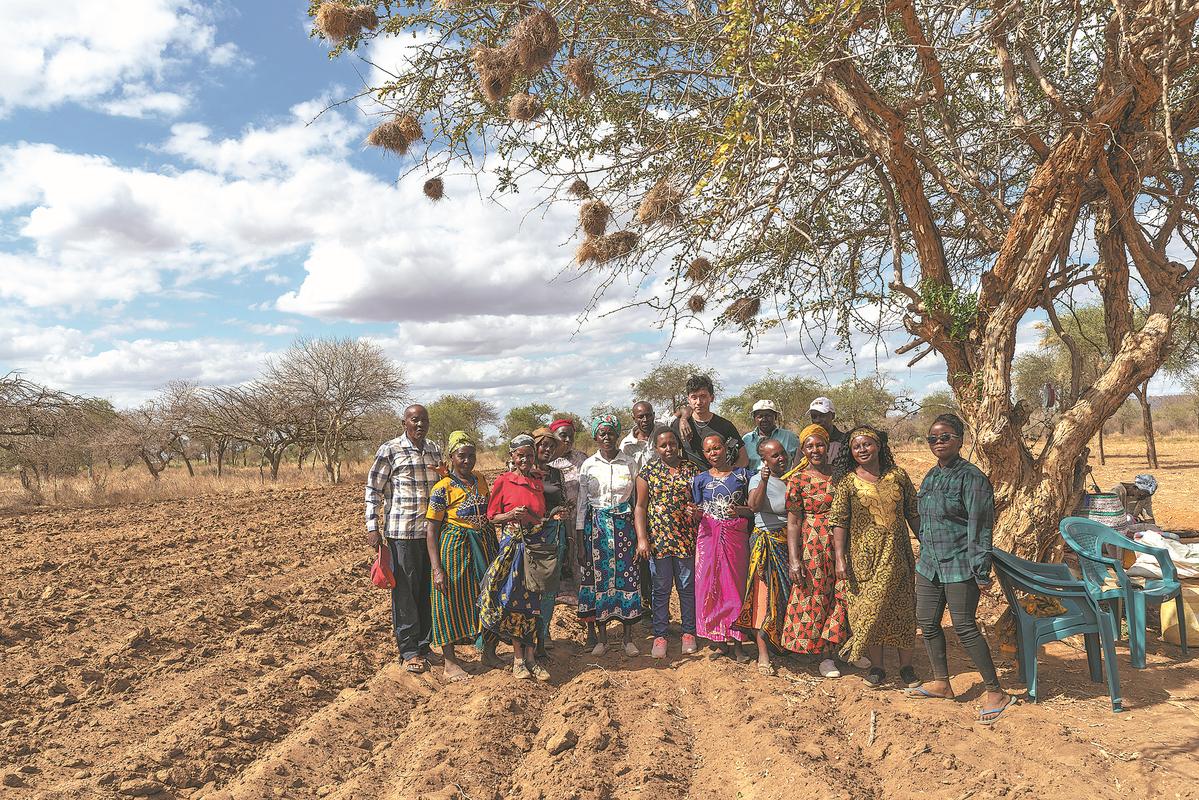
Residents of Kasioni village pose in front of their farm. Rain started falling in the area on Friday. (CHINA DAILY/XIE SONGXIN)
High demand
Ngunga wants young people from his village, most of whom have relocated to major cities, to consider investing in irrigated agriculture by sinking boreholes.
"The soil is fertile and the demand for food is always high," he said.
Those unable to afford to invest in boreholes in the area are turning to climate-smart agriculture to improve their yields, thanks to Phoebe Mwangangi, who trains farmers in this technique.
A smallholder farmer in the area, Mwangangi founded the Poverty Alleviation Resource Center, a community-based organization. She was trained by the International Crops Research Institute for the Semi-Arid Tropics, an international organization that conducts agricultural research for rural development.
She also instructs farmers on climate change mitigation measures to help them harvest their crops when there is minimal rainfall.
Mwangangi, who is currently working with six groups of farmers, said, "Farmers visit our demonstration farms to learn how to prepare the land, how to plant crops, and the type of crops to plant. We then encourage them to practice what they have learned at the center on their own farms."
She added that climate-smart agricultural practices and innovative methods are aimed at conserving water and soil.
These methods include forming rip lines — a low-tech system of harvesting rainwater.
A tractor digs rip lines 30 centimeters deep to loosen the soil. Farmers then apply manure to the rip lines before planting crops in them. The manure in the soil retains water so that crops can survive for up to three weeks in the absence of rain.
Mwangangi said: "We cause minimum disturbance to the soil. When rip lines are formed, an area is left between the two lines, in which we perform shallow weeding. We don't dig very deep so that the soil remains largely intact."
Farmers also dig Zai pits to plant seeds. The pits are either 60 square centimeters or 90 sq cm, 30 cm deep and 60 cm to 90 cm apart.
A 60-sq-cm Zai pit holds five maize seeds, while a 90-sq-cm one holds nine seeds.
Topsoil from a pit is mixed with organic manure, which is used to fill the pit to increase soil fertility and the capacity of the soil to retain water.
As a result, the pits address the issues of infertile soil, land degradation, and moisture retention, making arid and semiarid land more productive.
Category
Farmers' Climate-smart Agricultural Practices in Kenya
Contributor
Farmers' Climate-smart Agricultural Practices in Kenya
Country
Story

